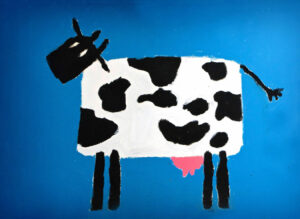Álvaro García
Newborn calves are born agammaglobulinemic, relying entirely on colostrum for immunity. This first feeding not only provides immunoglobulins like IgG, but also growth factors, nutrients, and antimicrobial peptides essential for early survival and development.
Historically, passive immunity was assessed as either “adequate” or “inadequate” based on serum total protein (STP) or IgG thresholds. However, recent expert consensus has introduced a more in-depth classification system using four STP-based categories: poor (<5.1 g/dL), fair (5.1–5.7), good (5.8–6.1), and excellent (≥6.2). This approach enables producers to identify calves at varying levels of risk and implement targeted colostrum management.
A 2023 retrospective study by Michigan State University (Crannell and Abuelo. 2023) evaluated more than 4,000 dairy calves to explore how these passive immunity (TPI) categories influence health, growth, reproduction, and first-lactation performance. The findings offer practical insights into improving calf management and long-term productivity.
Disease incidence and preweaning mortality
The study demonstrated a clear link between passive immunity levels and early-life disease risk. Diarrhea, the most common neonatal illness, increased progressively with declining TPI. Compared to calves in the excellent group, those with good, fair, and poor TPI faced 14%, 32%, and 49% higher risks, respectively. These results align with earlier work (Robison et al., 1988; Donovan et al., 1998) show that inadequate IgG intake increases susceptibility to pathogens like E. coli, rotavirus, and Cryptosporidium. The earlier onset of illness in poorly immunized calves suggests colostral immunity is especially important during the first two weeks, when gut immunity is still developing.
Respiratory illness, particularly BRD, was significantly more common only in calves with poor TPI, who faced a 39% greater risk than their well-immunized counterparts. No significant difference in BRD incidence was seen among calves with fair, good, or excellent TPI. This supports findings from Windeyer et al. (2014), who observed that passive immunity has a smaller influence on diseases like BRD, which tend to develop later—after maternal antibodies have declined.
Most striking was the fourfold increase in preweaning mortality among calves with poor TPI. In contrast, those in the fair and good categories showed mortality rates comparable to the excellent group, due to the farm’s excellent care. These results confirm longstanding evidence (Weaver et al., 2000; McGuirk & Collins, 2004) that poor passive immunity remains a major contributor to early calf losses.
Fortunately, effective colostrum protocols can significantly reduce these risks. Calves should receive 3–4 liters of high-quality colostrum (≥22% Brix) within two hours of birth. Farms should routinely assess colostrum with a Brix refractometer and monitor STP in a representative sample of calves between 2–7 days of age. Recent work by García (2025) and Kargar et al. (2020) suggests extending colostrum feeding for several days post-birth further reduces diarrhea and respiratory illness.
Calves identified with poor TPI should be managed more intensively, with enhanced hygiene, stress reduction, and, when needed, supportive interventions like immune supplements, rehydration therapy, or probiotics.
Growth and weight gain
Despite the health disparities, the study found no significant differences in average daily gain (ADG) by weaning across TPI categories. This result reflects strong on-farm management, particularly consistent feeding, and early treatment protocols, which helped calves maintain adequate nutrient intake despite illness.
While studies by Elsohaby et al. (2019) and Chigerwe et al. (2015) link better IgG status with improved growth, these effects are often masked in well-managed herds. A meta-analysis by Raboisson et al. (2016) emphasized that the impact of FPT on growth varies widely, influenced by nutrition and care quality. In this case, excellent calf rearing minimized the growth deficits often observed with poor TPI. In less optimized systems, however, low passive immunity may have a more pronounced effect on weight gain.
Reproductive outcomes
Passive immunity also showed long-term influence on reproductive performance. Heifers with poor TPI were 64% less likely to reach first breeding and 55% less likely to achieve successful conception, indicating delays in reaching puberty or reduced fertility. However, fair, and good TPI calves performed similarly to the excellent group, suggesting that moderate deficiencies may be overcome with sound management.
Faber et al. (2005) and DeNise et al. (1989) found that higher IgG levels during early life improved fertility and reduced age at first calving. The mechanisms may include reduced illness, more consistent growth, and healthier reproductive tract development.
Interestingly, the study found no differences between TPI groups in the number of services required for conception or age at first calving among heifers that reached puberty. This could reflect excellent herd reproductive programs that compensate for early disadvantages. Still, on farms with weaker management, early immune deficits could hinder reproductive progress.
First-lactation milk production
First-lactation milk yield, measured as 305-day mature equivalent (305ME), did not differ significantly between TPI categories. Despite expectations that better early immunity supports long-term productivity, this result again points to the farm’s strong postnatal management, including nutrition, disease control, and growth monitoring—as a leveling force.
Some studies (Robison et al., 1988; DeNise et al., 1989) have linked higher colostral IgG levels to improved future milk yield. However, others, such as Faber et al. (2005), show that positive effects can be diminished in herds with strong compensatory care. Preweaning growth, particularly achieving over 0.7 kg/day ADG, is a key predictor of future milk production (Soberon et al., 2012), and played a role in minimizing differences here.
This study reinforces the critical role of colostrum in calf health and lifetime success. Poor passive immunity markedly increases the risk of disease and death in early life. While growth, reproduction, and milk yield may not always differ significantly in high-performing herds, these outcomes are vulnerable to variation in less optimal environments.
Adopting the four-category TPI system allows producers to evaluate colostrum effectiveness and intervening as needed more precisely. Timely delivery of high-quality colostrum, extended colostrum feeding, and regular monitoring of STP are essential practices. Targeted care for low-TPI calves, along with strong overall management, can mitigate many of the risks associated with failed passive transfer.
Ultimately, investing in colostrum quality is investing in calf survival, productivity, and herd profitability.
The full list of references used in this article is available upon request.
© 2025 Dellait Knowledge Center. All Rights Reserved.









